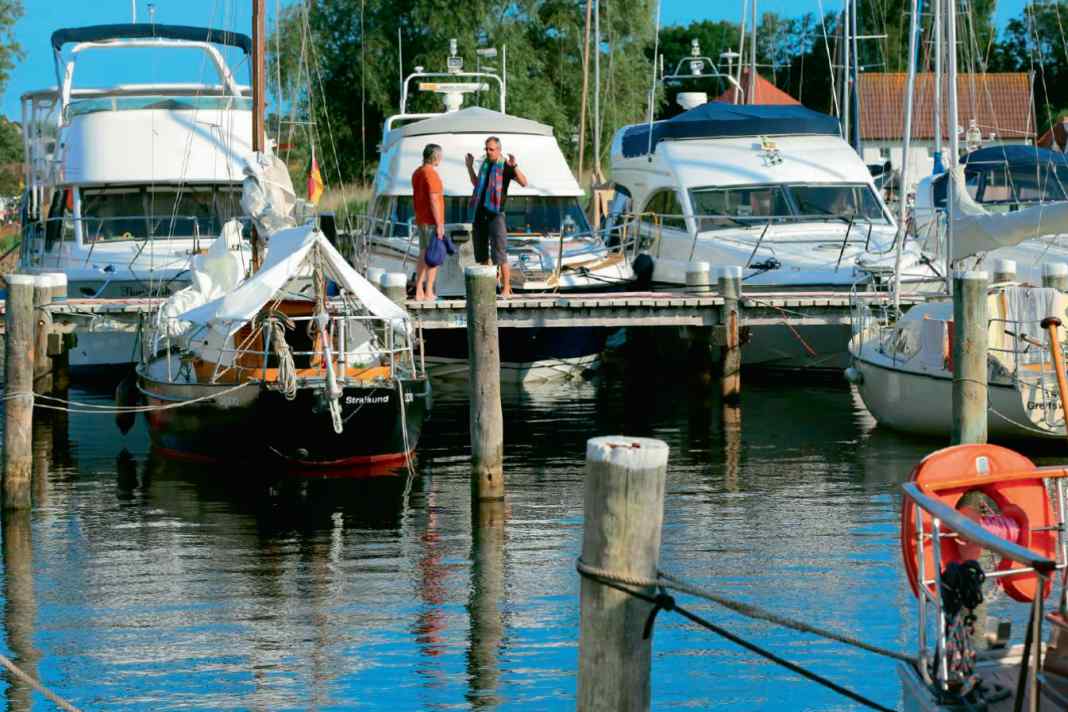




Boxes with stakes




Inland and in coastal areas with only slight differences in water level - such as along the German Baltic coast - many harbours are equipped with jetties and piles. With four lines pointing in all directions, you are well positioned even in changing wind and current conditions. A box 1 consists of two piles and the jetty. This is usually a fixed wooden jetty at deck level, but there are also systems with low floating jetties. Most boats enter the box "ahead", i.e. bow first, which is then used to enter the jetty. With pontoons close to the waterline, however, it may make more sense to moor stern first. The piles are also available in different designs, made of concrete, steel A or wood Bwith plastic or rubber sheathing or without. The line is always placed over the pole, not over the hook, when mooring, whether with an eye or on a slip. Its task is to prevent the line from slipping downwards. If it were fully loaded, it could bend or break.
Finger webs
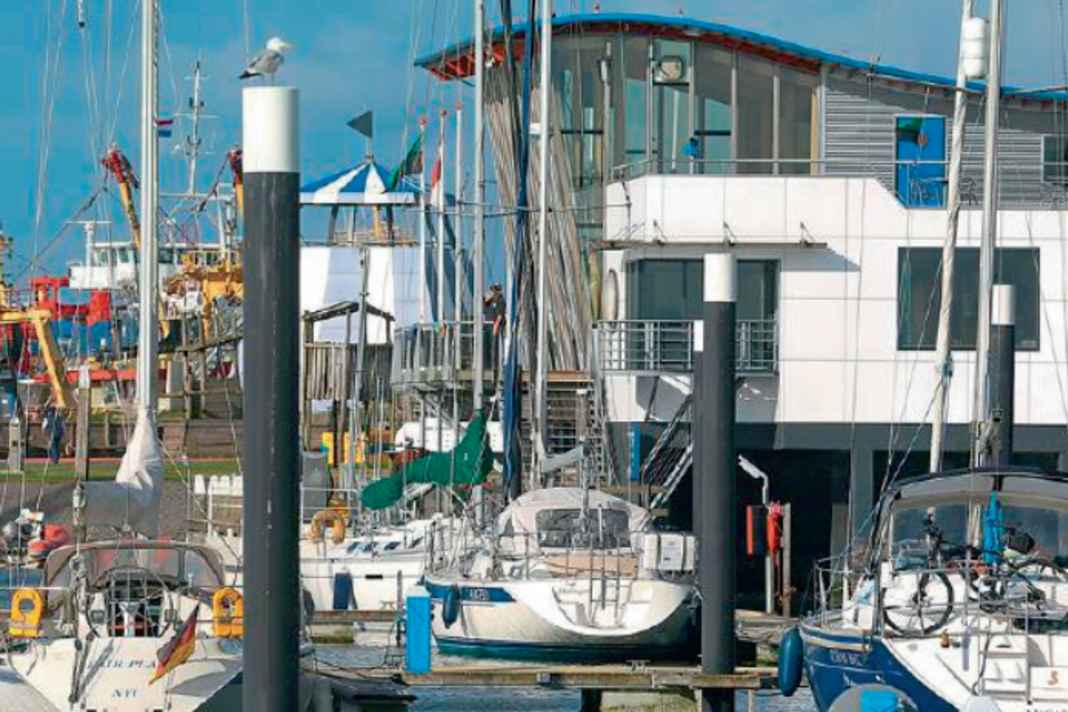





Jetties with "fingers" can be found in more and more harbours in all areas. The reason is simple: while they save almost as much space as the classic pile boxes (see left), they offer more comfort for the crews because you can also disembark at the side of the boat - provided it is actually a walk-on jetty 2 and not just a cantilever, which primarily serves to separate two spaces 3. Another advantage of finger pontoons is that, unlike long boxes, there is no risk of missing the piles when entering and having to reset in the middle of the manoeuvre because the boat is essentially moored alongside. In tidal areas, the floating version is usually used; the pontoons and boats remain at the same height and the lines can be deployed at normal length. In inland and coastal areas without a large tidal range, fixed jetties with fingers are more suitable. 4 are also common. There are also mixed forms with poles and finger bars, which are then only used to get out.
Further topics for beginners:
Floating docks
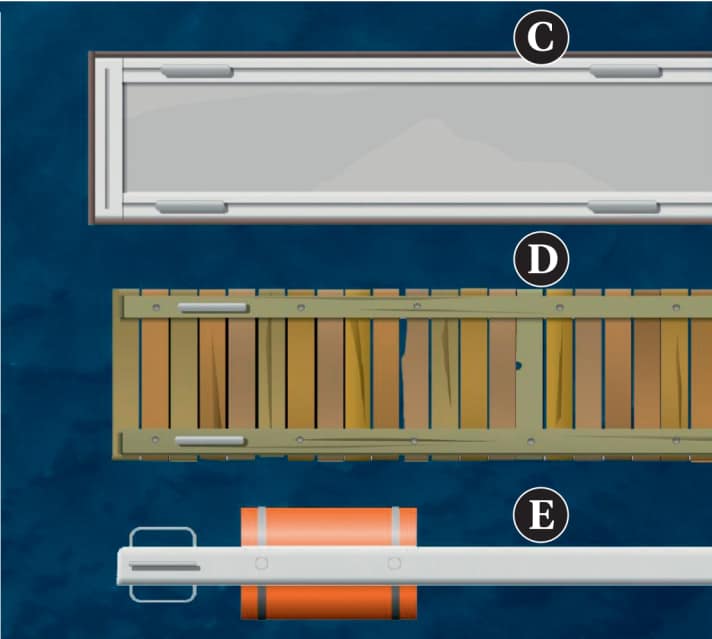
Floating docks are made up of individual elements and can be adapted to any existing water surface using the modular principle. They also have the great advantage that they are independent of the water level. In tidal areas, they are therefore connected to the shore via freely supported bridges, and they are held in position by stakes. The most solid design consists of components with concrete surfaces Cwhich are often fitted with wooden, rubber or plastic rubbing strakes at the edges. Cleats, rings or bollards are available for mooring. Wooden floating docks are also widely used D. If you have to jump from the boat onto the jetty when mooring, you need to be very careful: Not only can the wood be slippery when wet, but floating finger bridges in particular can sink under the additional weight and you must not lose your balance. Sturdy footwear is therefore a must. Instead of walk-on finger bars, slender outriggers with floats at the end can also fulfil the separating function between individual berths EYou can attach lines to them, but you should not walk on them.
Longitudinal
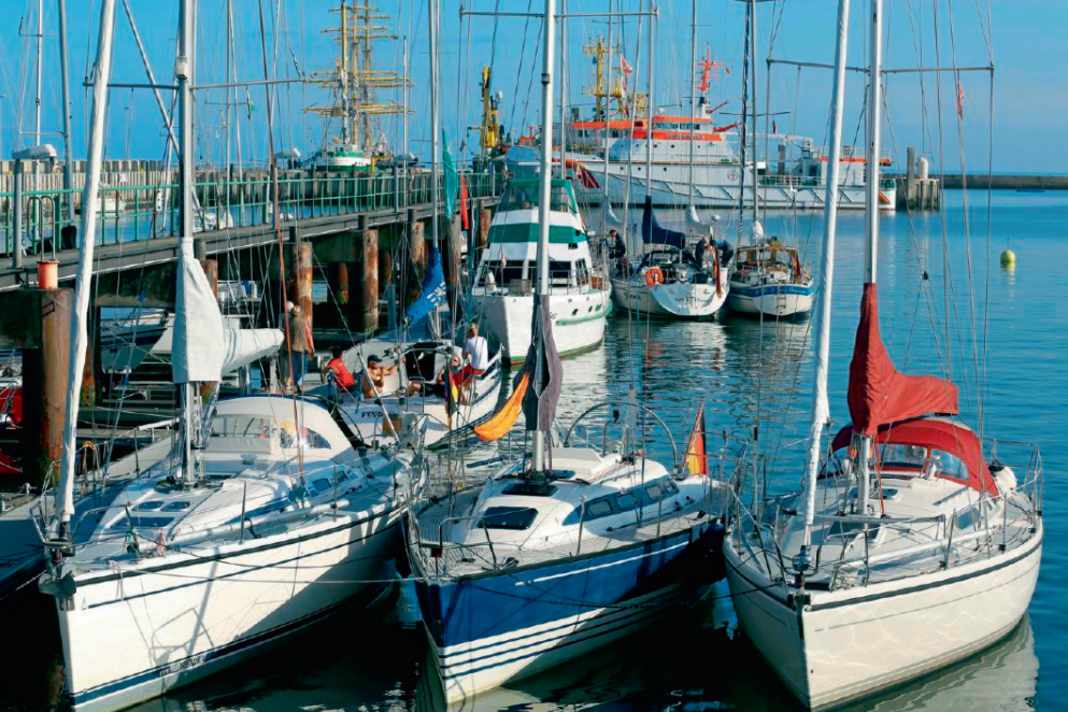





In club harbours and commercial marinas, there are only a few alongside berths, as they are not as space-saving as boxes. If the jetty is full, the only option for other boats is the small packet 1. Although this is not really a problem, it naturally restricts the "freedom of movement" of everyone involved. In addition, the boats are less stable in unfavourable swells as they are only moored on one side and rolling movements can hardly be absorbed by the lines. If there are longer jetty or pier areas, they are usually reserved for yachts that are too large for other berths. However, coming alongside also has two advantages: Firstly, it is well suited for short-term mooring - for example in the waiting area of a lock or at the boat filling station - as two (or even just a single) lines are sufficient temporarily; secondly, the manoeuvres are clearer overall and can be aborted more easily in an emergency. Typical places to go alongside, however, are not only flat jetties (sometimes with piles as protection on the water side 5 ) and paved shorelines, but also walls and quays of all kinds: the range extends from immaculately smooth concrete or wooden walls 3 to more rustic surfaces that can be "padded" with old tyres 2. The least favourable variant is sheet piling made of metal, because the fenders can slip into the recesses and lose their effect 4.
Muring
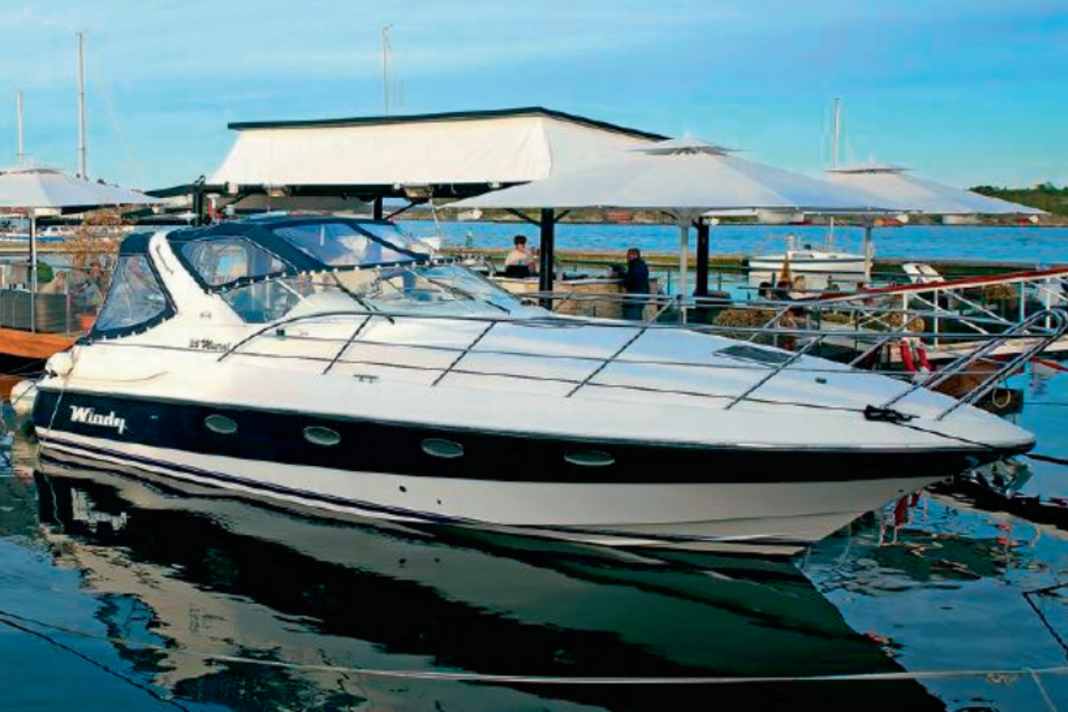





Murings are the simplest (and cheapest) method of creating as many moorings as possible on a jetty or quay wall. Instead of finger piles or stakes, anchor or mooring stones are sunk in a row parallel to the jetty, which serve as an attachment point for the mooring line. This in turn leads either to a mooring buoy Picture 5to which the stern line is attached while the bow is moored to the jetty Picture 1or it leads over the ground to the edge of the jetty. With the stern at the jetty, the line is then hauled up next to the hull and tied to the bow Picture 3. Tip: Work gloves protect against dirt and shells!
On the footbridge
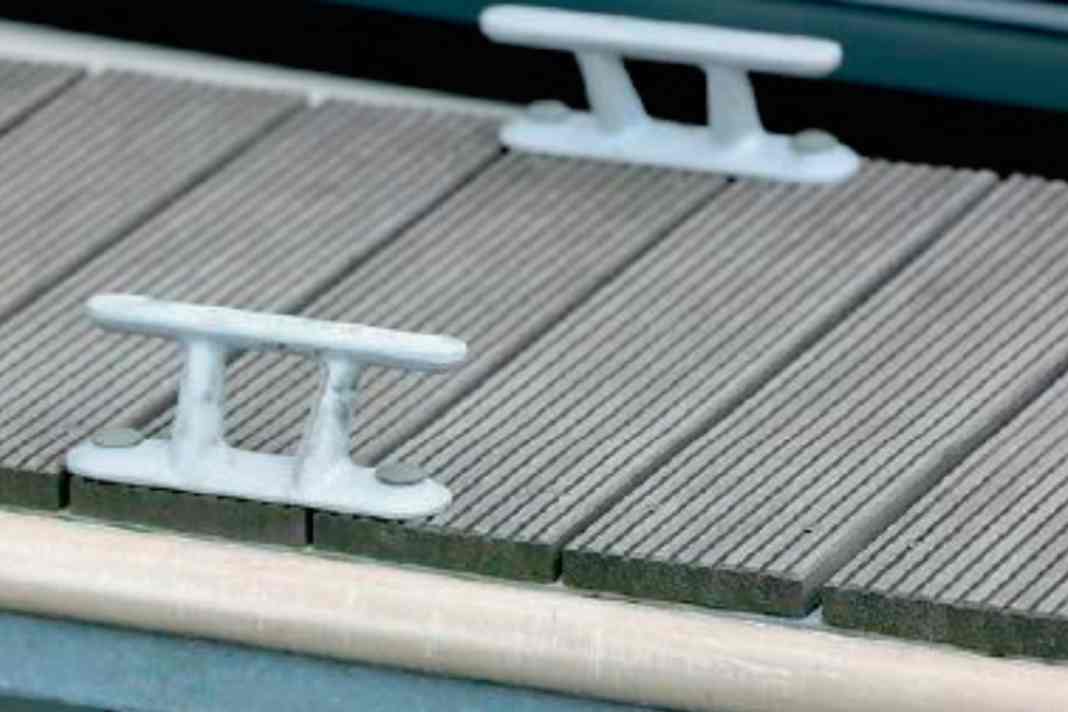





Fittings to which the lines can be attached come in many shapes and sizes. They are usually dimensioned to fit the boats (and lines) for which the jetty is intended. So if you only find tiny rings on a jetty for paddlers, it's better to find somewhere else. The most common (and most versatile) are cleats 1but which must be properly occupied if you don't have an eye to put through and think about in the line. Double and double cross bollards work in a very similar way 2which, however, are rarely found in marinas. Piles 3 on the other hand, are common. If they are short, however, there is a risk that one eye (e.g. with a bowline) can slip upwards under tension. In this case, the laid webel bollard is the better alternative. Simple iron bollards 4 are even more robust and are usually fitted with a collar at the upper end to prevent a line from slipping off. On rings 5 and ironing 6 the round turn with two half-turns is used. Do not tie off to ladders: they serve as rescue routes!

